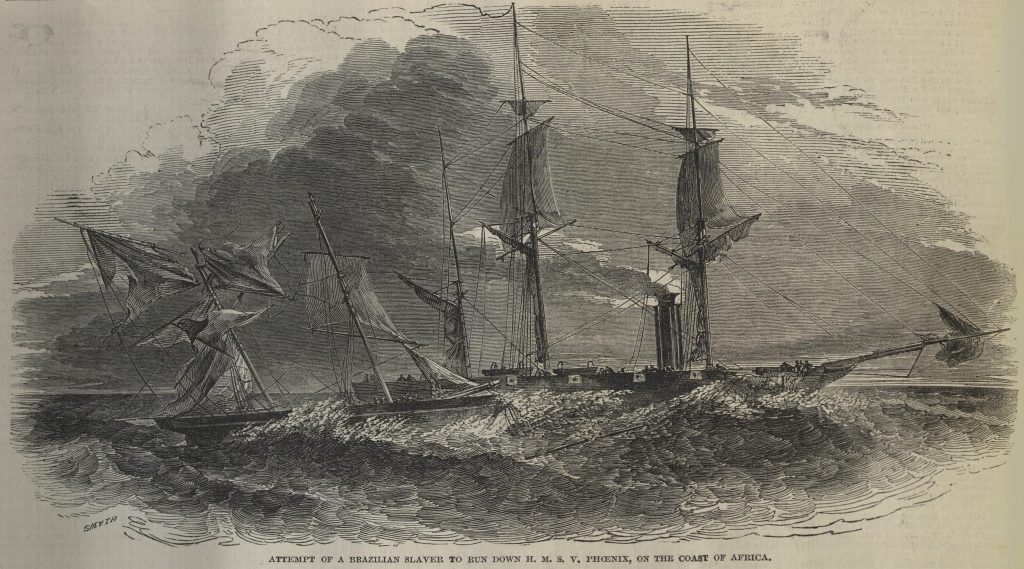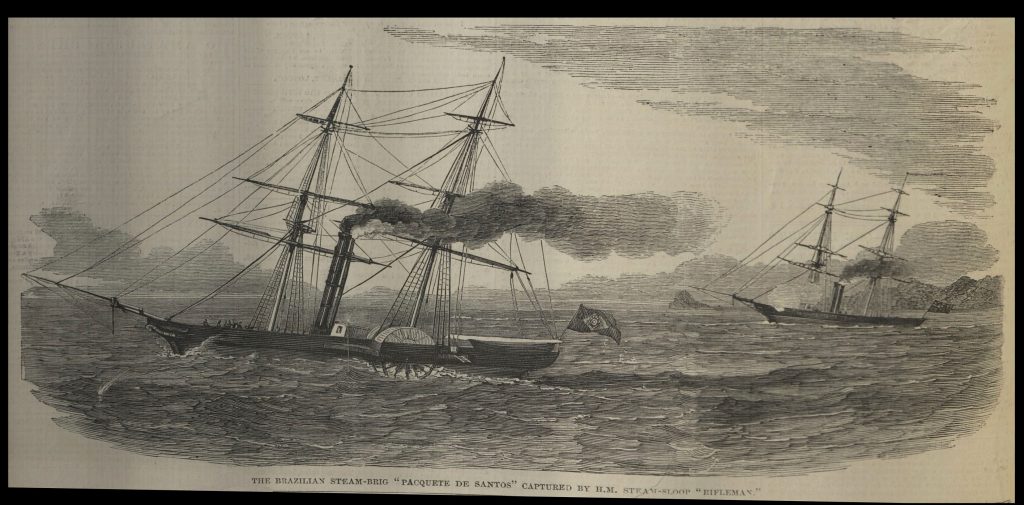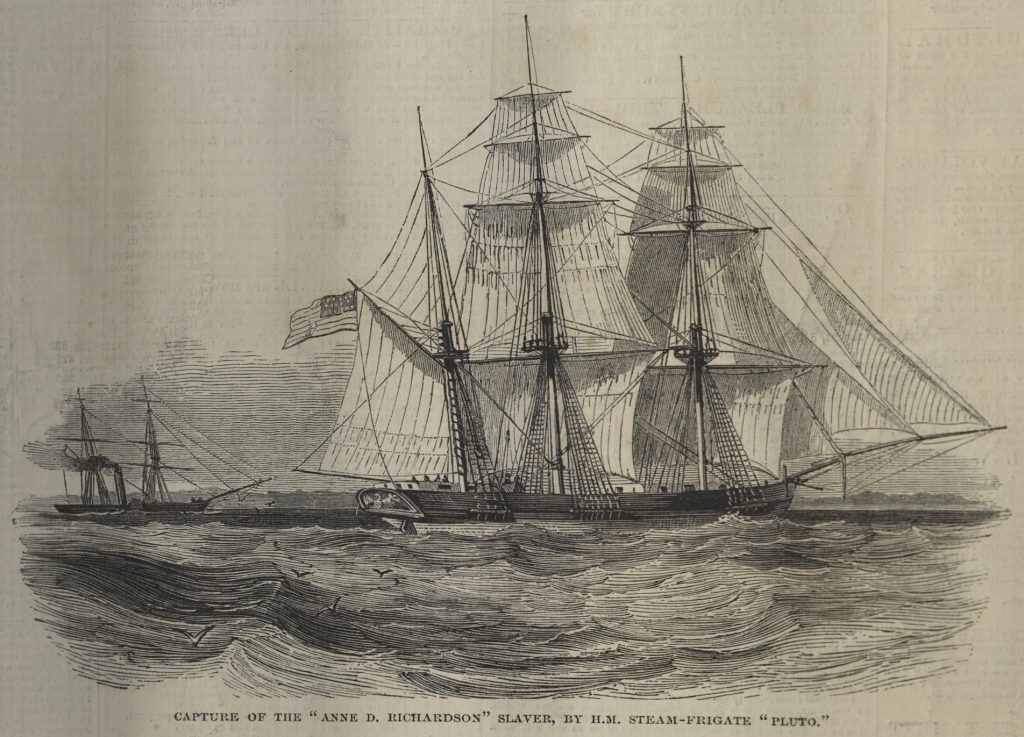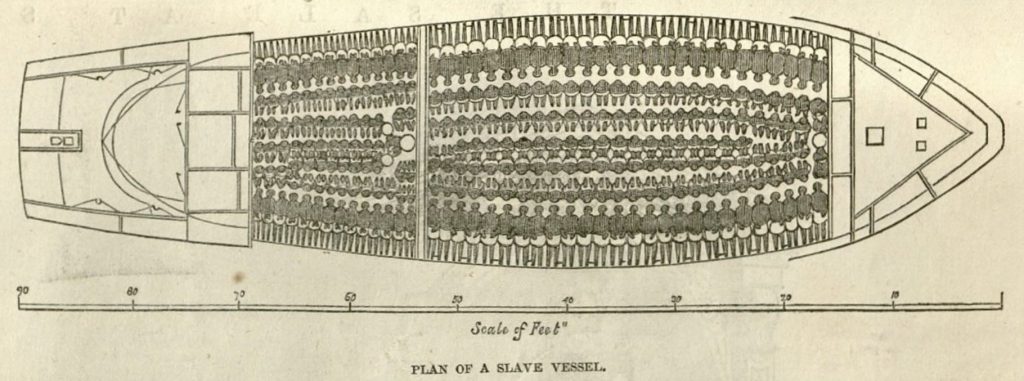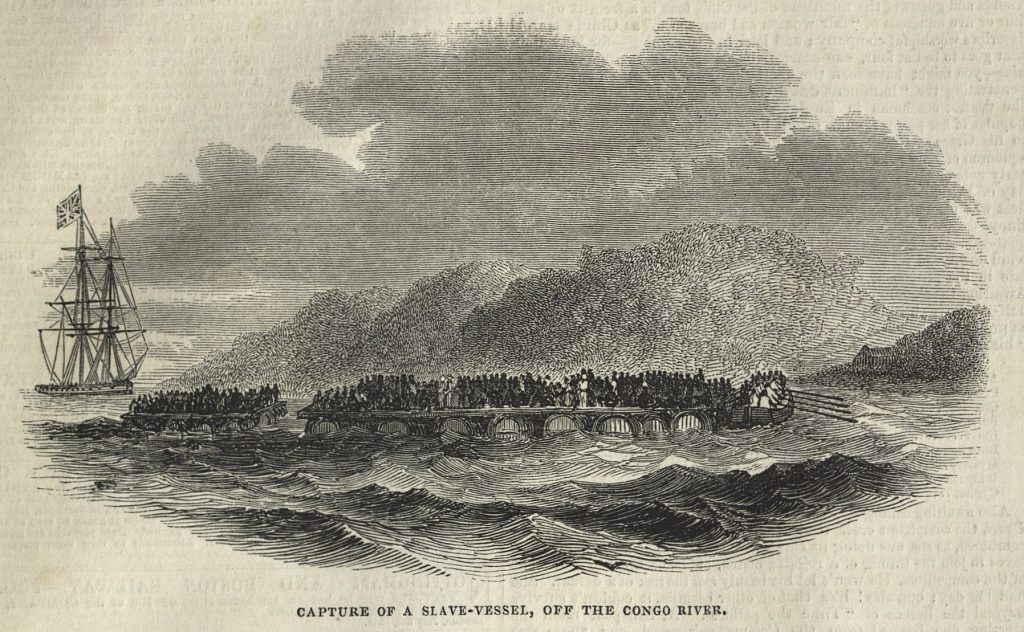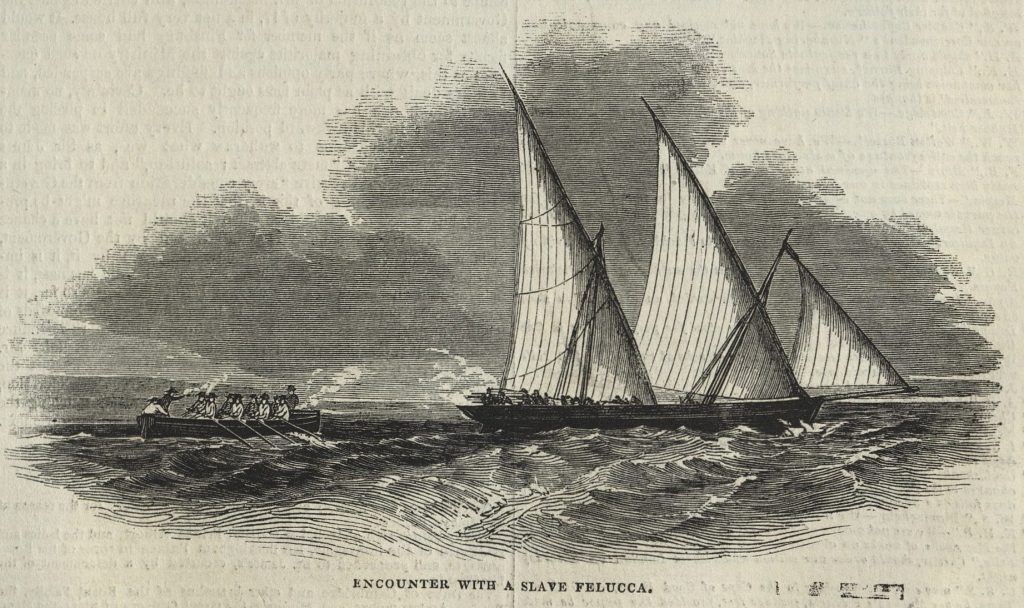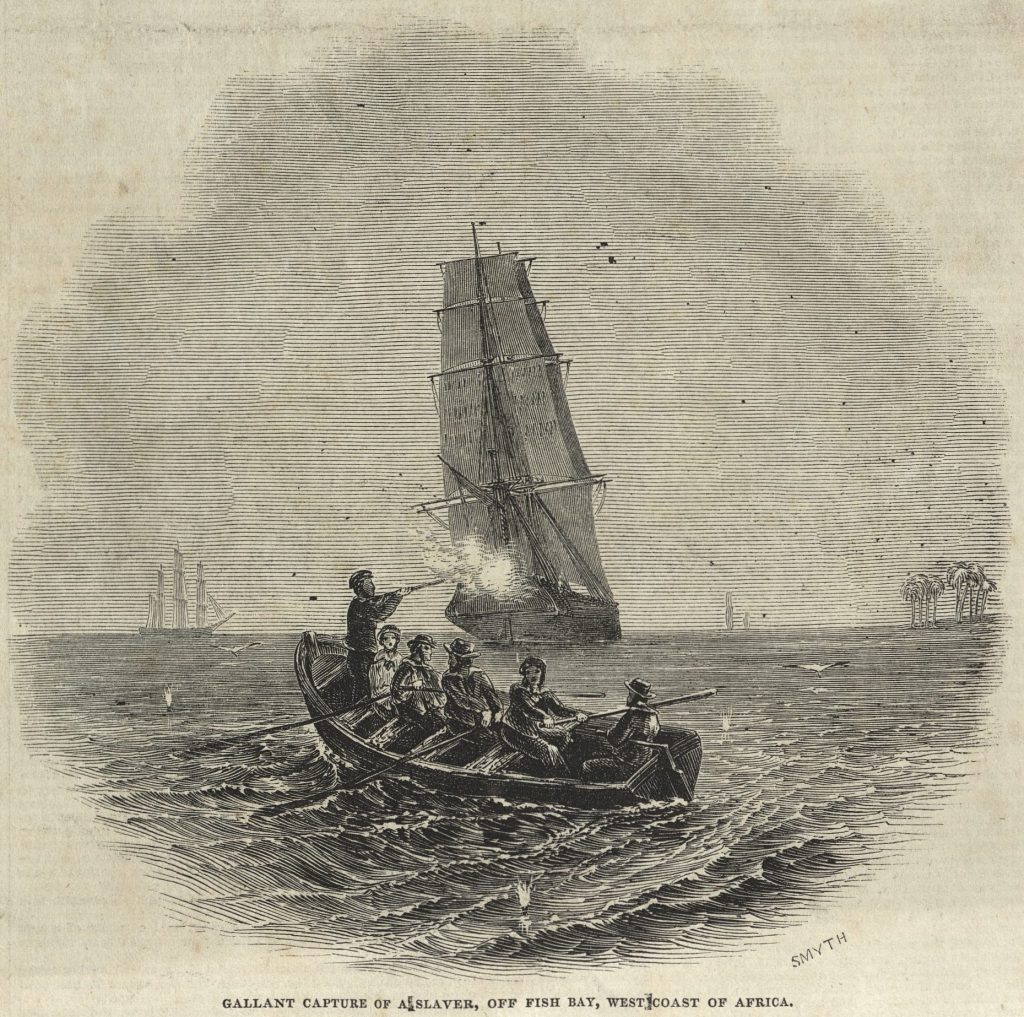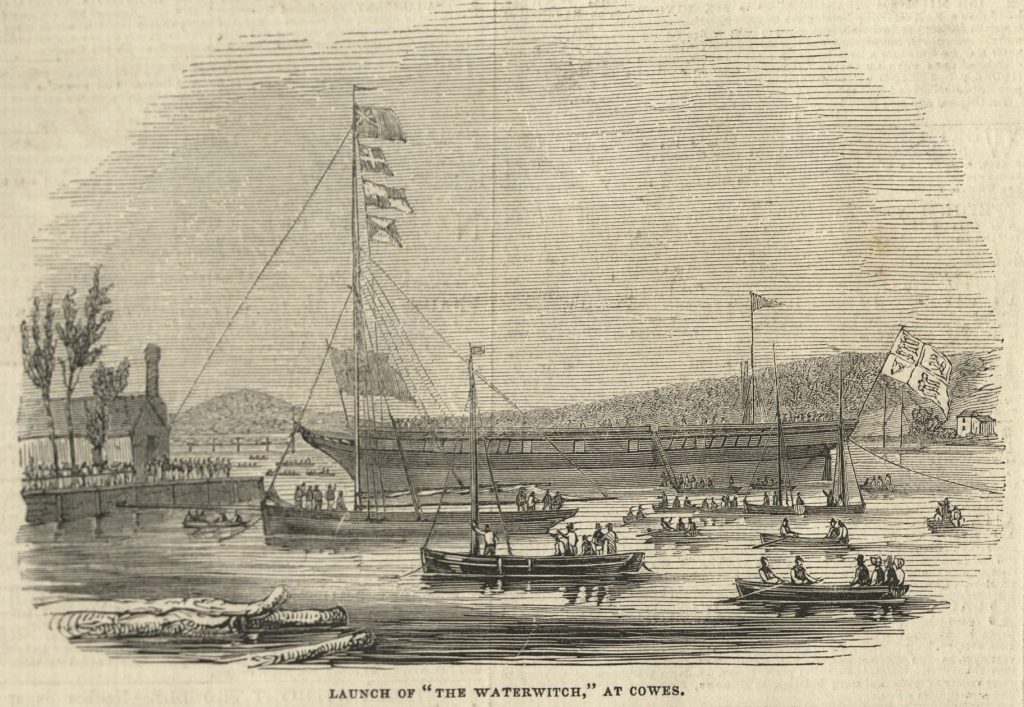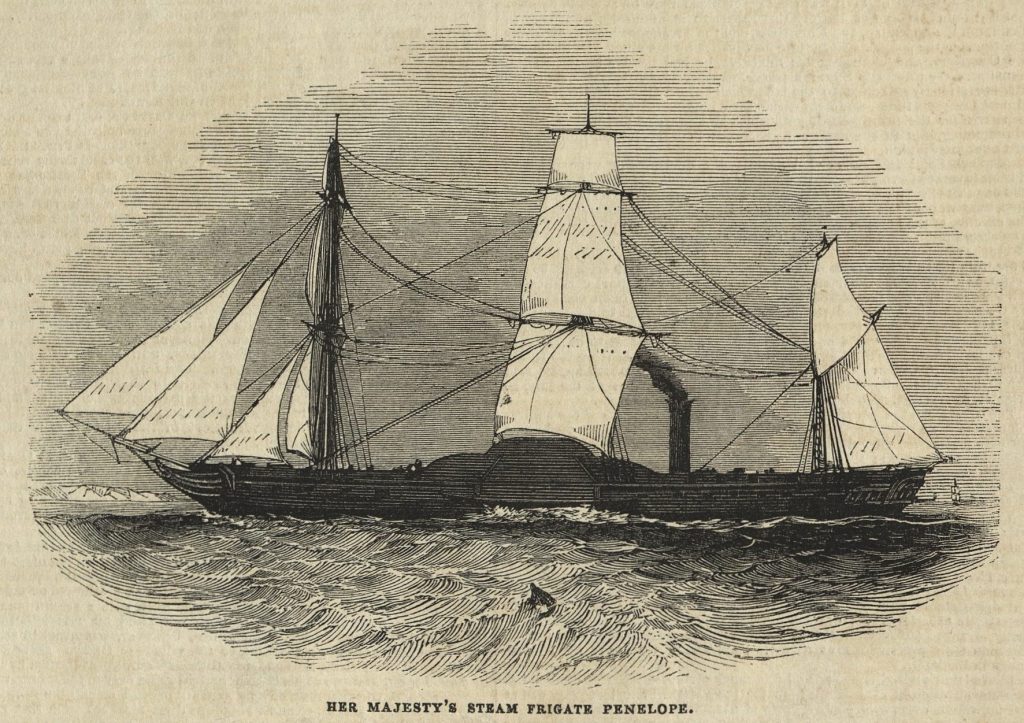Encounters between slavers and British naval vessels were common in the Atlantic, but rarely did a slaver try to run down a man of war. The following illustration shows one of such encounter between a Brazilian slaver and H.M.S. Phoenix. The Illustrated London News, 24 August 1850. Courtesy of University of Missouri Libraries.
Read More
Brazil was the largest slave trading power in the first half of the nineteenth century. By that time, many Brazilian slavers had incorporated some of the latest naval technologies of the time, such as steam power. The image shows H.M.S. Rifleman in pursuit of the Brazilian steamer Paquete de Santos. The Illustrated London News, 6 […]
Read More
The presence of American ships in the slave trade increased significantly in the mid-nineteenth century. Not only did the American flag protected slavers from being intercepted by British naval ships, but several slavers from Portugal, Brazil, and other countries imported and used ships built in the United States in their activities. The image shows H.M.S. […]
Read More
Representations of slaves packed into vessels played an important role in illustrating the horrors of the middle passage, and the evils of the slave trade. The Illustrated London News, 26 August 1848. Courtesy of University of Missouri Libraries.
Read More
Sketches of slave ships were a popular way of publicizing the horrors of the slave trade and galvanizing support for the suppression campaign. The following image provides a bird’s eye view of the hold of a slave ship, showing how slaves were chained to the deck. The Illustrated London News, 26 August 1848. Courtesy of […]
Read More
The Congo River was always an important point of slave embarkation. In the nineteenth century, however, its importance as a source of slaves further increased as the legislation to suppress the traffic initially focused on the North Atlantic. The following image shows a British man of war preparing to rescue Africans who were previously on […]
Read More
Encounters of naval vessels with slave ships on the coast of Africa were frequent and provided exciting reading material for anti-slavery audiences. The following image shows an example of such encounters. Here a boat from British man of war engages with a slave felucca, a smal slave ship on the coast of Africa. The Illustrated […]
Read More
As the suppression campaign progressed, slave traders sought new points of embarkation along the coast of Africa. The more hidden and discreet they were, the better for them. Fish Bay, in present-day Angola, is an example of such points. It was located in a remote region, but not too far from previous and more important […]
Read More
One of the most successful cruisers in the campaign, the H.M.S. Waterwitch was a British naval vessel that pursued slavers in the Atlantic and Indian oceans. The following image shows the launch of the Waterwitch during the peak period of the suppression. The Illustrated London News, 22 June 1844. Courtesy of University of Missouri Libraries.
Read More
The suppression of the African slave trade required the use of significant naval power. The following image shows one of the British man of war deployed in the campaign, the H.M.S. Frigate Penelope. The Illustrated London News, 1 July 1843. Courtesy of University of Missouri Libraries.
Read More

